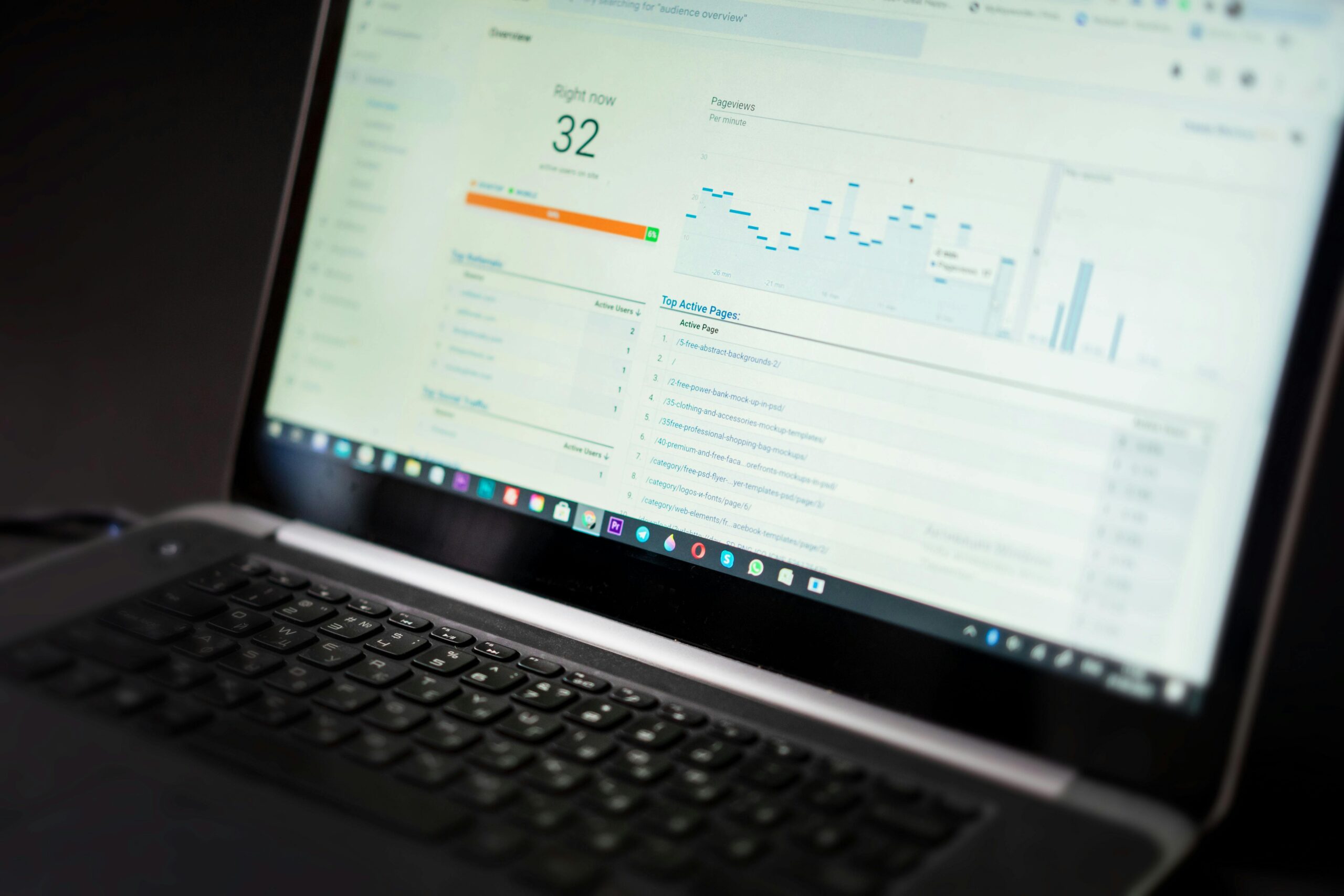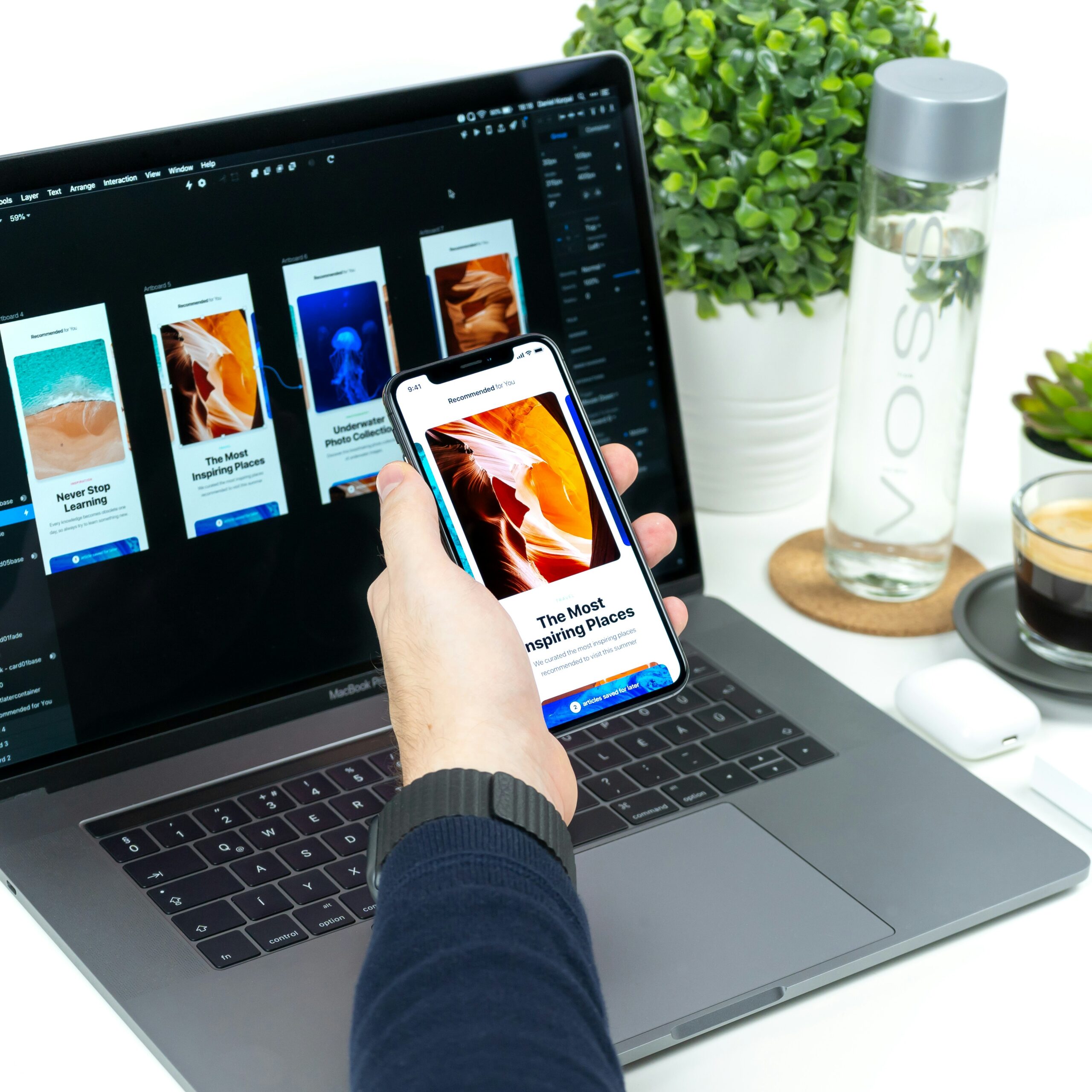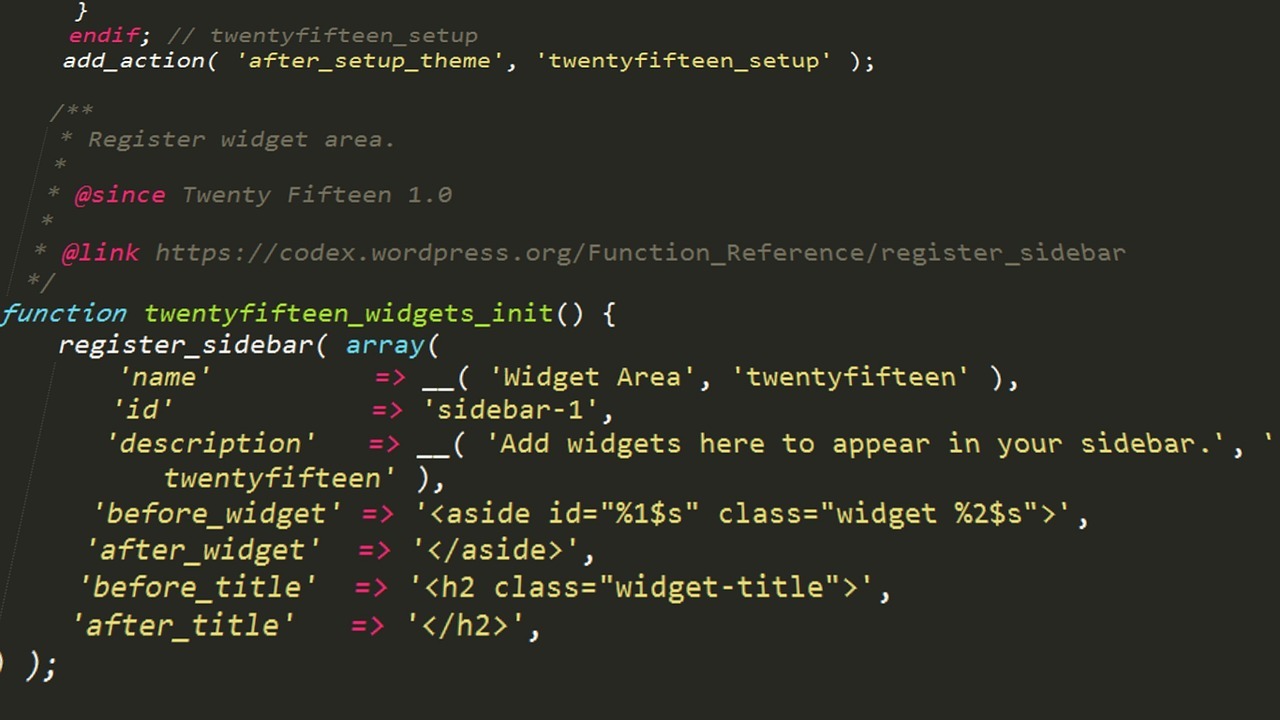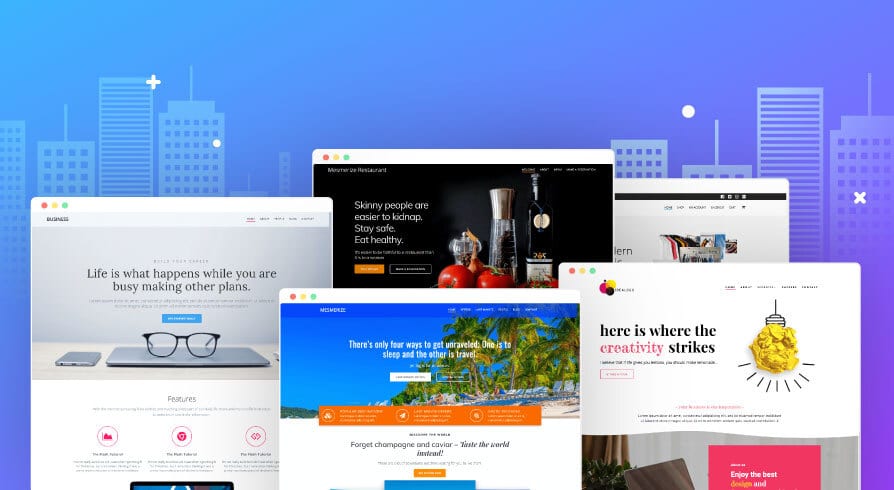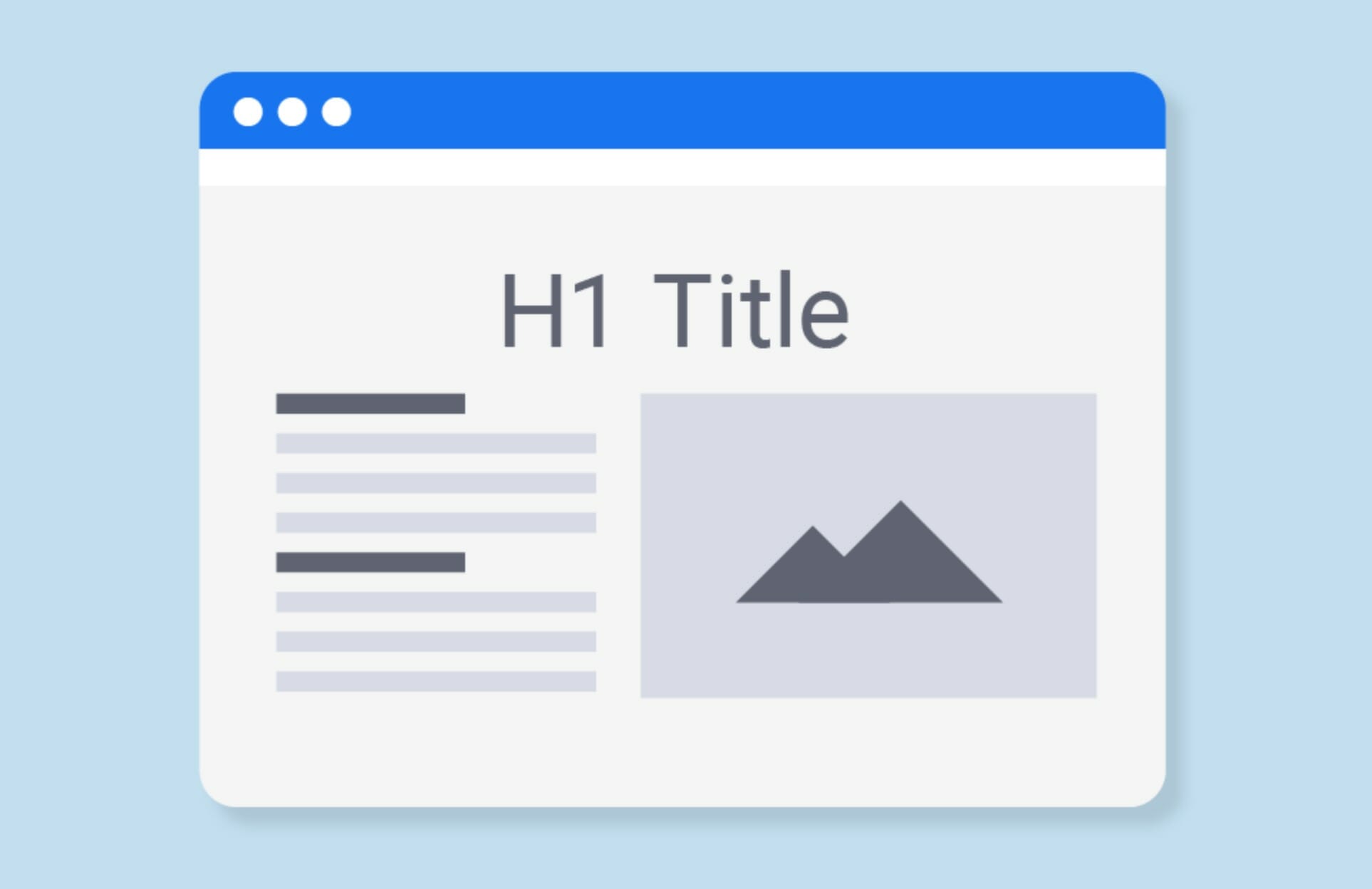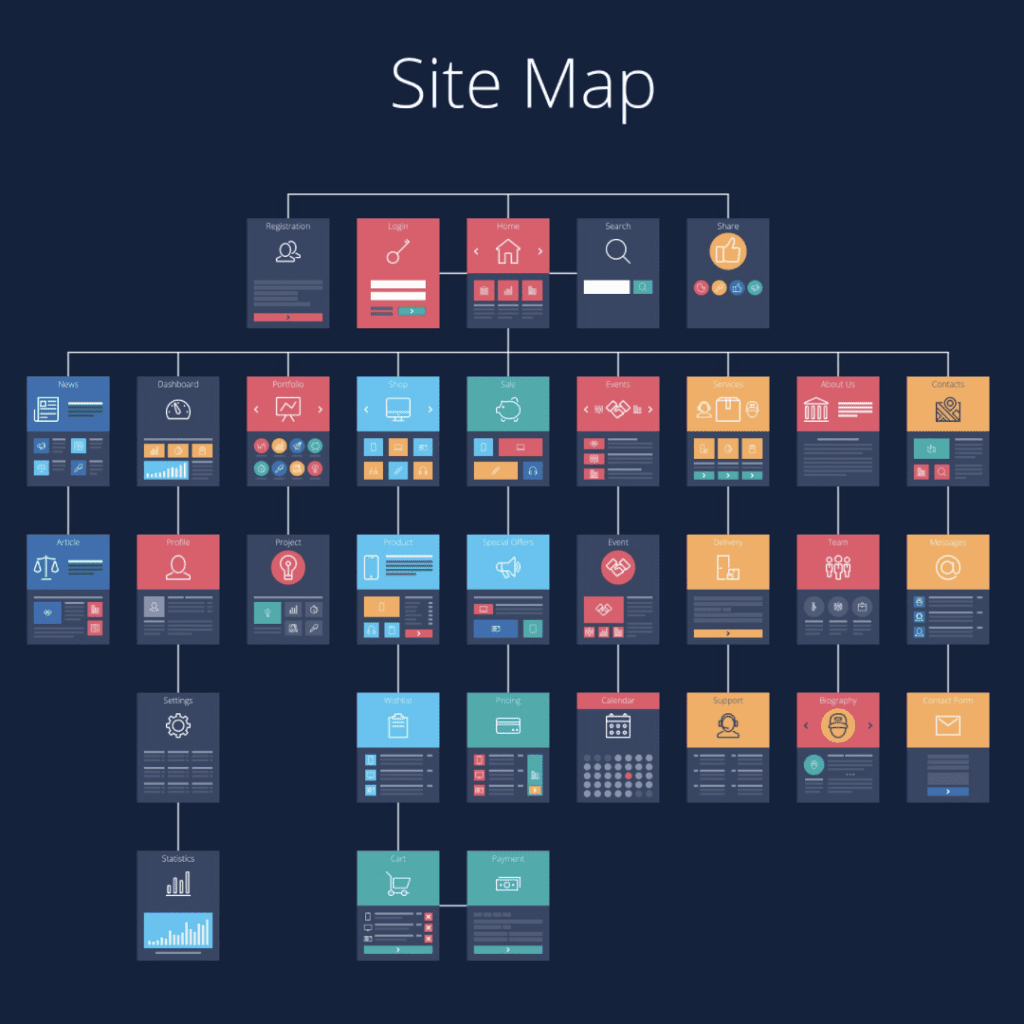A robust online presence is crucial for the success of any small business. Your website serves as the virtual storefront of your enterprise, and it’s essential to make it as compelling and user-friendly as possible. This article provides you with five impactful web design tips that can significantly boost the performance and appeal of your small business website. Whether you are a novice or an expert in web design, these insights can guide you toward creating an effective and successful online platform for your business.

Enhance The Visual Appeal In Your Web Design
Enhancing your website’s visual appeal isn’t just about aesthetics—it’s a vital component of effective web design that directly influences user experience and engagement. A visually appealing site attracts visitors and encourages them to stay longer and explore more, which can lead to increased business opportunities.
Let’s delve into how you can uplift the visual charm of your small business website.
Incorporate A Clean And Modern Design
Creating a clean and modern web design is a vital step in enhancing the appeal of your small business website.
- It all starts with using whitespace, an effective tool for highlighting key elements and facilitating a clean, uncluttered appearance.
- A consistent color scheme complements this clean look. A harmonious selection of colors elevates your site’s visual appeal and reinforces your brand identity.
- The choice of fonts is critical in setting the tone for your site’s content. Opting for modern, easy-to-read fonts helps ensure your message is easily understood and aligns perfectly with your brand’s image.
Optimize For Mobile Responsiveness
As more users access the internet through mobile devices, mobile responsiveness is paramount for a successful small business website. A layout that adapts well to various screen sizes ensures seamless navigation and enhances the user experience.
Speed optimization is another crucial aspect, particularly for mobile users, as faster loading times can significantly lower bounce rates and increase user satisfaction. Finally, integrating mobile-friendly features, such as touch-friendly buttons and simplified navigation menus, contributes to an overall streamlined user experience on mobile devices.
Utilize High-Quality Images
High-quality images can significantly enhance your website’s appeal and performance. Crisp, high-resolution images elevate your site’s visual aesthetics, lending it a professional and engaging sheen. Where possible, opt for original photos to showcase your products or services accurately and authentically.
However, it is crucial to ensure these images are optimized for web use. Large image file sizes can lead to slow load times, frustrating users and potentially prompting them to abandon your website. Adhering to these guidelines can create a visually striking and smooth-running website that effectively captivates your audience.

Improve User Experience In Your Web Design
Improving user experience (UX) is integral to designing a successful small business website. An intuitive, user-friendly site enhances customer satisfaction and encourages repeat visits, fostering loyalty among your audience. In this section, we will provide valuable tips on refining your website’s UX for optimal performance.
Simplify Navigation And Menu Structure
Simplifying your website’s navigation and menu structure is integral to enhancing the user experience. Reducing the number of menu items can prevent users from feeling overwhelmed and allow them to quickly access the information they seek.
Prioritizing the most important sections or pages in the main navigation menu ensures that users can easily find these crucial areas. Moreover, adhering to the “three-click rule”—whereby all site content should be reachable within three clicks from the homepage—helps to promote a seamless and satisfying browsing experience that enables users to engage more deeply with your website.
Ensure Fast Loading Times
Ensuring fast loading times is paramount for improving user experience on your website. Begin by optimizing all media files and scripts, reducing their load time to facilitate prompt content delivery. Choosing a reliable and fast hosting solution guarantees efficient site performance, decreasing bounce rates, and improving user engagement.
You might also consider implementing a Content Delivery Network (CDN). By distributing your content across a network of servers around the globe, a CDN ensures users worldwide can access your site’s content quickly and smoothly, enhancing their browsing experience.
Implement Clear Call-To-Actions
Clear and compelling Call-to-Actions (CTAs) serve as the driving force behind user engagement on your website. To maximize their effectiveness, ensure your CTAs are prominently displayed and strategically positioned to capture and retain users’ attention. Use persuasive language that inspires action–be it downloading a guide, signing up for a newsletter, or purchasing a product.
Furthermore, don’t hesitate to experiment with various CTA designs and placements. You can optimize your CTAs to achieve the best results by monitoring the performance data. This iterative approach will help you find the perfect balance that compels users to interact with your site and take the desired actions.

Enhance SEO Performance In Your Web Design
Enhancing Search Engine Optimization (SEO) performance is crucial to your website’s design and functionality. It boosts your site’s visibility on search engines and drives organic traffic, helping your business reach a wider audience. Let’s explore key strategies to amplify SEO performance in your web design.
Conduct Keyword Research And Optimization
To enhance the SEO performance of your website, a comprehensive understanding of your target audience, their search behaviors, and the keywords they use is essential. Tools such as Google Keyword Planner or SEMrush can be utilized to perform keyword research, identify the most relevant and popular keywords, and understand their respective search volumes.
Once you’ve identified these critical keywords, they should be integrated naturally within your website content, including in meta tags, URLs, and image alt text. This strategic implementation of keywords will optimize your website for search engines, enhancing its visibility and potentially driving more organic traffic to your site.
Create Unique And Engaging Content
Creating unique and engaging content is paramount for enhancing your website’s SEO performance. Prioritizing originality ensures that your content offers unique value to visitors, leading to higher engagement and increased sharing. To make your content more interactive, incorporate multimedia elements such as relevant images, videos, and infographics.
Not only does this make for a more engaging user experience, but it also makes your content more likely to be shared, further boosting your SEO. Furthermore, regular updates to your website—be it new content or updates to existing ones—can help maintain user engagement and improve your site’s search engine ranking.
Mind Your Business Newsletter
Business news shouldn’t put you to sleep. Each week, we deliver the stories you actually need to know—served with a fresh, lively twist that keeps you on your toes. Stay informed, stay relevant, and see how industry insights can propel your bottom line.
Subscribe to Mind Your Business
Optimize Meta Tags And Descriptions
Optimizing meta tags and descriptions is crucial to enhancing your website’s SEO performance. These elements should be compelling and concise, providing an accurate summary of each page’s content to entice users to click through their search results.
Incorporating targeted keywords into your meta tags and descriptions can significantly improve your website’s visibility on search engines. Additionally, it’s important to remember that each page on your site should have unique meta tags and descriptions. This helps search engines understand the distinct content on each page and avoids potential confusion for your audiences.

Maximize Conversion Rates In Your Web Design
Maximizing conversion rates is a pivotal element of web design that directly impacts your business’s bottom line. A well-crafted website can lead visitors on a seamless journey, converting them from a casual browser into a committed customer. Let’s delve into the strategies that can effectively enhance conversion rates in your web design.
Create Relevant Landing Pages
To maximize conversion rates, it’s crucial to create relevant landing pages. The content on these pages should be custom-tailored to address your target audience’s specific needs and interests, which can significantly enhance engagement and lead to higher conversion rates.
A strong headline is also fundamental – it should be compelling and clear, quickly conveying the value of your offering to visitors. Lastly, ensure clear Call-to-Actions (CTAs) on your landing pages. Whether it’s making a purchase, subscribing to a newsletter, or downloading a resource, your CTAs should make it easy for visitors to understand and take the next step, enhancing the user experience and boosting conversions.
Implement A/B Testing
Implementing A/B testing is a powerful strategy to maximize your website’s conversion rates. By testing different elements, such as headlines, images, and color schemes, you can gain insights into what works best for your audience and drives the optimal results. This involves using A/B testing tools to gather data and analyze results, offering you the foundation to make informed, data-driven decisions.
Remember, A/B testing is not a one-off event but a continuous process of fine-tuning and enhancement. By adopting this iterative approach, you’re always working towards improving your site and boosting conversions.
Streamline Checkout Process
To ensure a high conversion rate, it’s essential to streamline your website’s checkout process. Minimizing the number of steps makes it easier and quicker for customers to complete their purchases, thus reducing the risk of cart abandonment. Additionally, offering a guest checkout option can appeal to customers who prefer not to create an account yet still wish to purchase.
Lastly, providing various payment options caters to your customers’ different preferences, adding to their convenience and encouraging them to finalize their purchase. The combination of these strategies can greatly enhance your checkout process, leading to an increase in overall conversions.

Utilize Social Media In Your Web Design
Social media has emerged as a powerful tool for businesses in the digital era, opening doors to a global audience. Integrating it into your web design can amplify your online presence, foster engagement, and drive conversions. Let’s examine some key strategies for effectively utilizing social media in your web design.
Ensure Easy Accessibility To Social Media Platforms
Integrating social media buttons into your web design can significantly enhance user engagement and promote your online presence across multiple platforms. To achieve this, the buttons must be placed prominently—preferably in the header or footer—to ensure visibility for all visitors.
The buttons should cover a variety of social media platforms, representing all the platforms where your business is active, such as Facebook, Twitter, LinkedIn, Instagram, Pinterest, and others. Lastly, functionality is key. All social media buttons should link directly to your respective social media profiles, providing a seamless transition for the user.
These strategies allow visitors easy access to your social media pages, promoting interaction and engagement.
Encourage Social Sharing
Leveraging social media platforms in your web design can be instrumental in promoting user engagement and expanding your online presence. High-quality, engaging content such as informative blog posts, eye-catching infographics, and captivating videos can motivate visitors to share your content on their social media.
Incorporate highly visible social share buttons for seamless sharing on all your pages without disrupting the user experience. Furthermore, incentivizing social sharing by offering discounts or giveaways to users who share your content or products on their social media can significantly bolster your online visibility and engagement.
Engage With The Audience
Engaging with your audience is a cornerstone of leveraging social media in your web design strategy. Regular interaction, such as promptly responding to comments and messages, shows your audience that you value their input and fosters a sense of community around your brand.
Encouraging user-generated content is another effective way to increase engagement and extend your reach. When users share their experiences with your products or services, it adds authenticity to your brand and creates a more personal connection with your audience. Finally, keep your audience updated with regular posts about your business. This could include news about product releases, upcoming events, or behind-the-scenes content, which keeps your audience continuously engaged and informed about your brand.

Conclusion
In conclusion, a well-structured, user-friendly, and engaging web design is vital to any successful digital strategy. By incorporating SEO best practices, creating relevant landing pages, implementing A/B testing, streamlining the checkout process, and integrating social media into your design, you can significantly enhance your website’s visibility, user engagement, and conversion rates.
Remember, your website is often the first touchpoint a potential customer has with your brand, so make it count. Continuously evaluate your design, content, and SEO strategies, adjusting as necessary to remain relevant and effective in an ever-evolving digital landscape.
